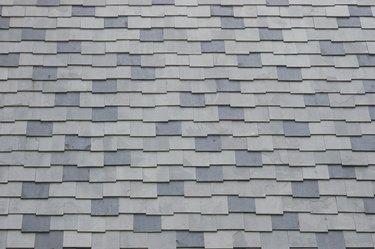
A properly installed roof adds value to the home as well as structural integrity, and aids in keeping elements out of the home. Roofing also is expensive when installed by licensed professionals using the latest in building materials. For the more price conscious do-it-yourselfer though, a roof can be installed for less as long as some important guidelines are followed.
The DIY Approach vs. Pro
Video of the Day
The cheapest way to install a roof is to do it yourself. Licensed roofing contractors generally charge thousands of dollars for the job, which doesn't include the cost of roofing materials, costs that can be avoided if you perform the work yourself. Realize, however, that the job will go much smoother and in less time if you enlist the aid of some willing friends who will pitch in for free. You'll still need to purchase a building permit from your local building code authority and the prices for the permits vary greatly according to location.
Video of the Day
Materials
Purchasing building materials at home improvement and hardware stores cost quite a bit, sometimes in the thousands of dollars depending on the size of the job and the quality of the materials purchased. The more economical alternative is to find materials donated by charitable organizations, such as Habitat for Humanity, which operate stores that sell useable items to the public. While shingles may be hard to come by, guttering and flashing may be available. Check with your local building code authority for a location near you.
Design Elements
The size, shape and overall design of the roof you want to build are important factors concerning cost. Simply put, a more intricate roof – the level of the pitch, how many peaks, etc. — will cost considerably more than a simple roof, such as one found on a shed. Depending on the dwelling, a square or rectangular roof may suffice for the structure you've built or will be building upon. Realize while this roof is quite rudimentary construction-wise, no roof actually is "flat." Some degree of pitch is necessary for rainwater and melting ice run-off.
A Word of Caution
Your local building code authority, however, will have the final say-so on your project. In some jurisdictions, the DIY approach to roof building certainly is acceptable but the home inspector may cite your roof if it doesn't follow certain guidelines or restrictions regarding size, how many occupants are allowed under a roof of your devising and if any corners were cut during construction, for example if no guttering is used or no roofing underlay was used. Again, check with your local authority regarding any restrictions to save you money from being cited and money from having to tear down the roof and rebuild it to code.